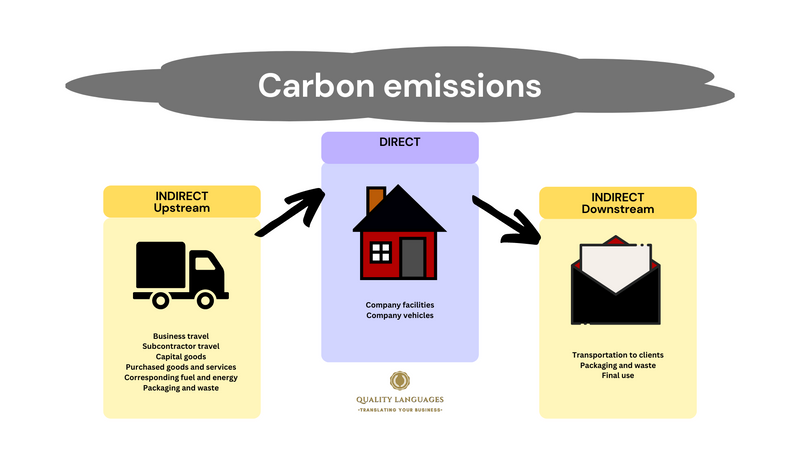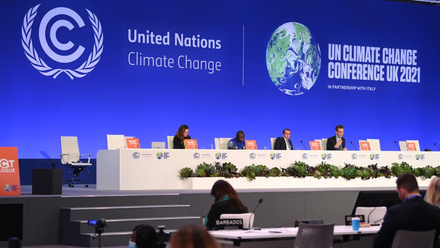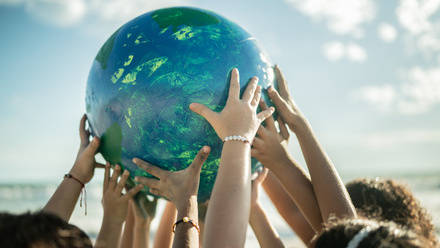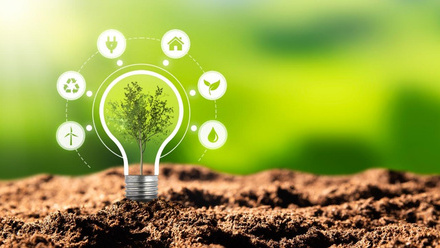Committing to sustainability
What can a small business do to help us all move towards a more sustainable future? Emma Plested MITI, shares the steps they are taking at Quality Languages.
A billionaire company has recently committed to giving 100% of its profits to environmental protection. The outdoor clothing brand Patagonia announced “As of now, Earth is our only shareholder. ALL profits, in perpetuity, will go to our mission to ‘save our home planet’.”
The bar is now set for the rest of us. How far will we go with our own company policies and day-to-day actions to protect the environment and contribute to our communities?
Aiming for more than carbon neutral
At Quality Languages, we’ve known for some time that we ought to assess our carbon footprint and take action to reduce it but we’ve procrastinated. Until recently, our steps towards being green have been ad hoc and personal, rather than a matter of company policy. They have certainly not been measurable.
Over the last few months we have read useful tips such as the ones in this ITI blog, attended various courses on sustainability hosted by the BW Chambers of Commerce, and learned along the way about B Corporations.
As a result, we have now made a formal commitment to become not just carbon neutral but to proactively make a positive impact on our people and our planet, with a long-term goal of becoming a B Corp. Formal, because we are now (in the process of) writing up our company policy and an action plan with milestones and checks to keep us on track.
Green supply chain
Since no one operates in a vacuum, there are multiple positives to companies like ours - a translation and language services provider - proactively taking steps towards better social and environmental performance. We:
- Reduce our own environmental impact
- Have a more positive impact within our local communities
- Become a green link in our clients’ supply chains
- Are better informed for our clients who need sustainability-related translations.
Carbon calculator
We found that the excellent site Zero Carbon Business was a good place to start, for understanding our carbon emission activities and calculating our footprint. By putting figures against each activity, we now have a baseline to work from.
In the long term, we will need to be audited or assessed on our activities and environmental impact, either by clients seeking to use green suppliers, or by certifying organisations like B Lab UK, or Earthly. This means we will need to show data from our “baseline year” and a clear progression from that point. So for us, that is now 2021-22.
Direct and indirect emissions
Like all businesses, our carbon footprint at QL is caused by a mixture of direct and indirect emissions. And, to use supply chain parlance, our indirect emissions are from a mixture of upstream and downstream activities.

As a micro business based out of a home office, our direct emissions are minimal, and mainly derive from our energy usage. We do not have a manufacturing centre (although our printer and scanner sometimes seem like a production line!) and our company vehicle also doubles as the family car. Data storage and transmission make up a large part of our figures.
The translation products we ship out are either digital documents, sent through email or the cloud, or they are on paper, posted through the Royal Mail and other courier systems.
Our indirect emissions are generated from a combination of our capital goods, our purchases of goods and services, including translations sent online and physically by subcontracted translators, and the fuel and waste from each of those.
These then, are the activities we can measure, monitor and improve. Most require small, achievable changes, and others, like our use of data, need a little more planning. But we are making the small adjustments first, knowing that from baby steps come great strides.
Buy local and reuse

“Buy local” is the sort of commitment that is easy to make in theory but, for us at least, is forcing us to make conscious buying decisions each day and does not yet come naturally. Partly because of convenience, partly cost.
Buying eco-friendly stationery, office equipment and snacks from local independents is great from an environmental and community perspective, but means allocating specific slots either in working hours or during family time to go and physically collect them. (Although we do have a fabulous local baker who makes deliveries on her bicycle, so our morning coffee and sugar fix is at least eco and office-hours friendly!).
It is also more expensive than bulk buying from suppliers like Amazon, and so we must actively make the choice between budget and eco or community impact each time we buy. Hopefully as time goes on this will be less of a conflict.
This does all mean far less packaging and waste though, and we’ve found lots of secondary uses for containers, or we take them to the local recycling hub. We also have a fantastic local artist who regularly requests plastics for her art installations that are exhibited around our local streets and parks.
Data
The carbon emissions of data storage are not to be underestimated and apparently data centre emissions account for the same amount as the entire global airline industry. So it is fair to say that being a virtual business rather than a manufacturing centre does not let us off the hook.
That said, we have still switched from paper subscriptions to digital-only and, as far as possible we are delivering digital files rather than hard copies to our translation clients. We are still trying to better understand the impact of our website, lead-generation tools and social media presence.
Action points small and large
With much more to understand and implement along our route to carbon neutral and beyond, these are just some of the actions we’ve taken so far or that are in our plan. Some are quick, easy wins, some will take a little while before we reach a suitable solution.
We are also interested in hearing what our translation suppliers do, to keep our part of the supply chain green.
- Deliver and receive digital files, not hard copies, where possible
- Turn off monitors, printers and lights when not in use
- Switch to digital-only magazine subscriptions
- Buy local
- Buy eco-friendly products
- Walk to local suppliers or use eco-delivery options






